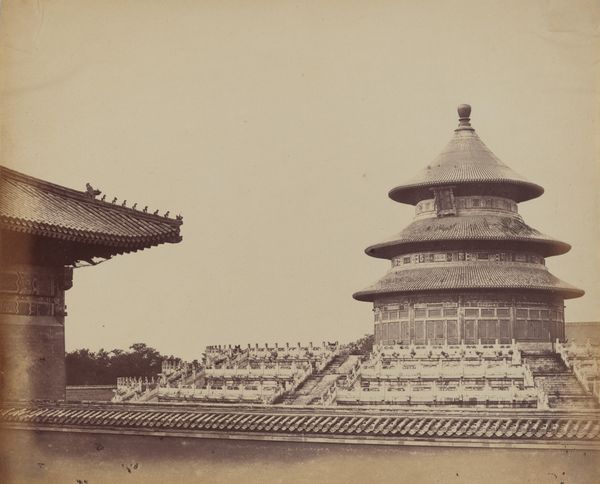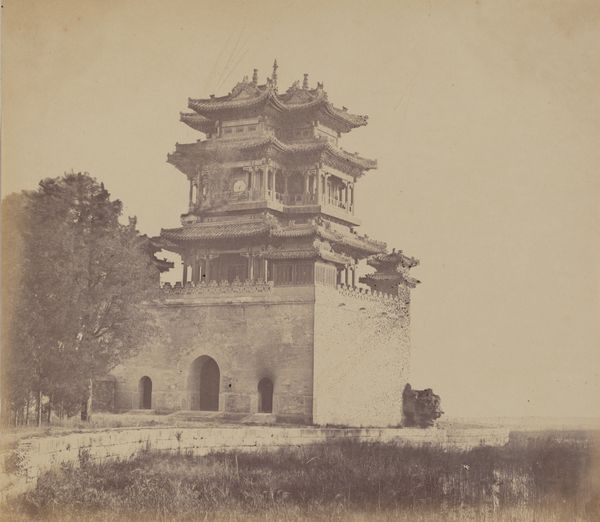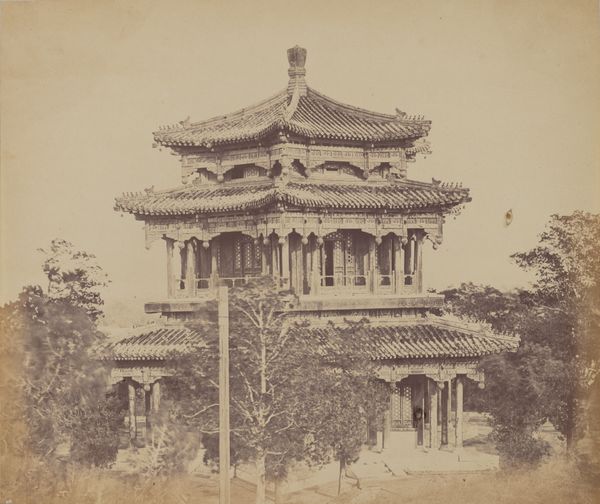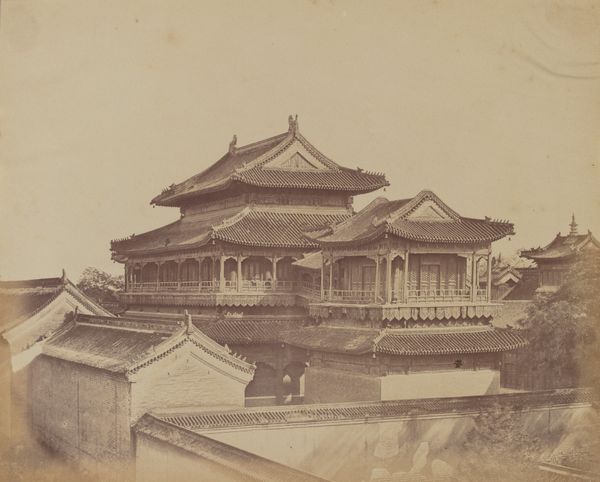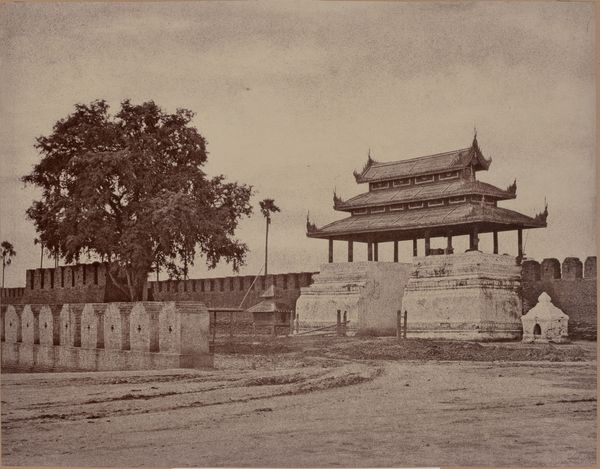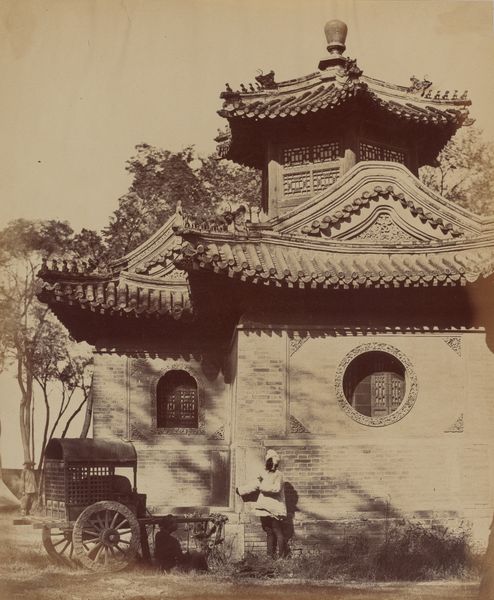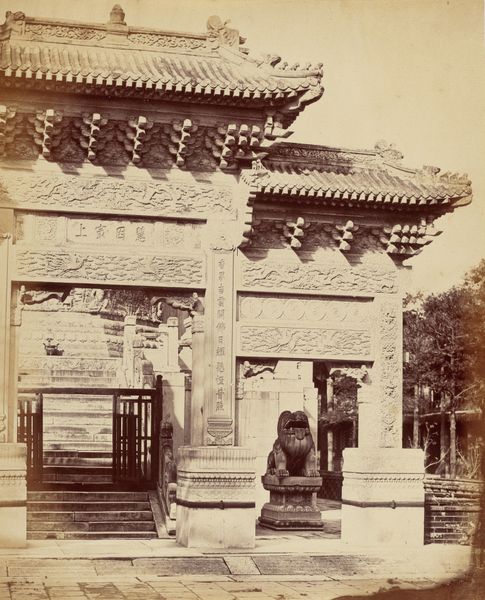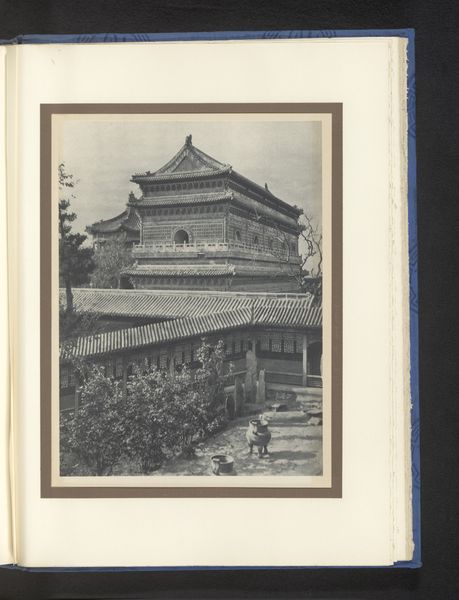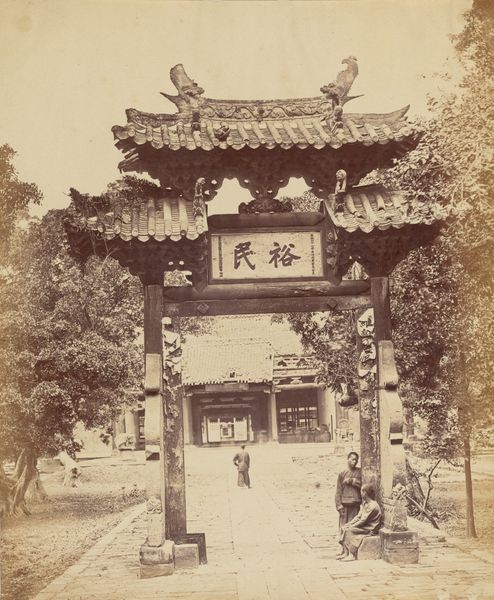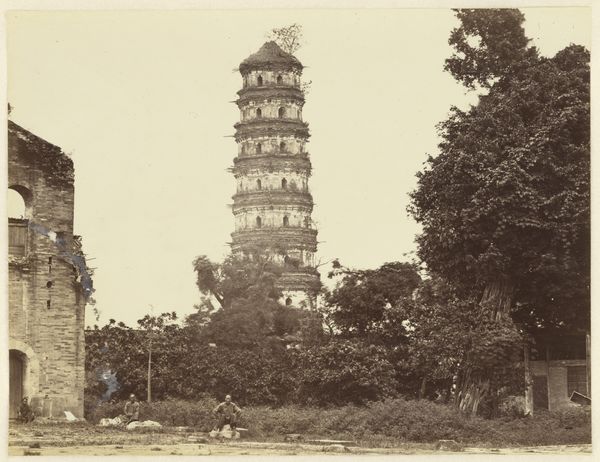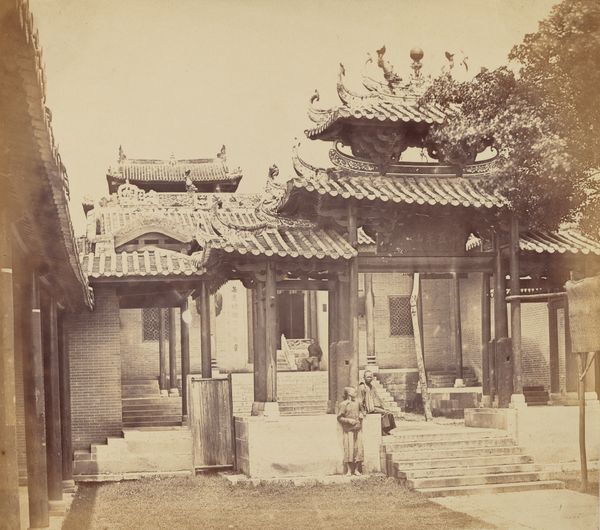
Sacred Temple of Heaven Where the Emperor Sacrifices Once a Year, in the Chinese City of Pekin, October 1860 1860
0:00
0:00
photography, albumen-print, architecture
#
aged paper
#
toned paper
#
typeface
#
asian-art
#
landscape
#
historic architecture
#
photography
#
orientalism
#
19th century
#
cityscape
#
albumen-print
#
architecture
#
realism
Dimensions: image: 24.6 × 29.4 cm (9 11/16 × 11 9/16 in.) mount: 25.2 × 31.6 cm (9 15/16 × 12 7/16 in.)
Copyright: National Gallery of Art: CC0 1.0
Editor: So, here we have Felice Beato's albumen print, "Sacred Temple of Heaven Where the Emperor Sacrifices Once a Year, in the Chinese City of Pekin, October 1860." The tones give it this otherworldly feel; it's sepia, ancient, yet solid. What jumps out to you? Curator: What's striking is Beato's strategic capture of the Temple. We must think about the physical process. This wasn’t a point-and-shoot. This was an elaborate dance of chemistry, equipment, and imperial politics. Editor: Imperial politics? How so? Curator: Beato was one of the first to photograph China extensively. This was right after the Second Opium War. The photograph itself becomes a document of colonial power and control. Notice the single figure at the base. Are they part of the temple staff or are they added into the photo later? Consider the labor involved. Editor: I see. It almost flattens the structure, stripping away some of its imposing power in favor of this…cataloging. Curator: Exactly. The material reality is that an object like the Temple, imbued with spiritual significance, becomes reduced to an item, a commodity within a visual economy dictated by the West. Think, too, of the materiality of the print itself: the chemicals, the paper, the specific techniques needed. Each informs the reading. What survives and what has changed with age to this print? Editor: That's true. The aging and fading add another layer of history, almost a decay mirroring the shift in power you mentioned. I never considered how active the materials could be in shaping the meaning. Curator: Precisely. Recognizing the means of production lets us look beyond face value.
Comments
No comments
Be the first to comment and join the conversation on the ultimate creative platform.
